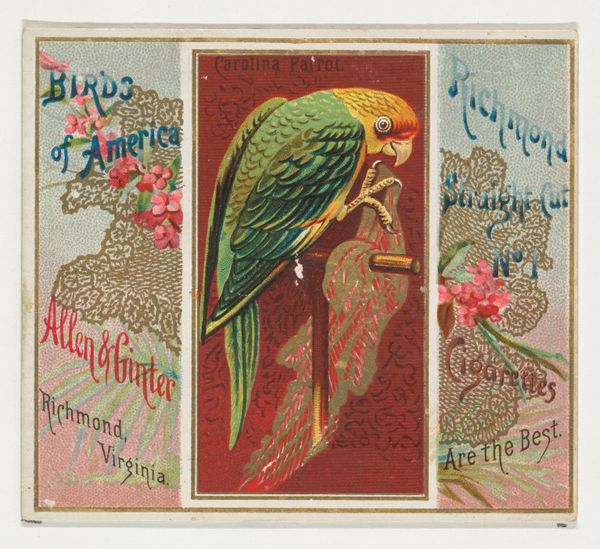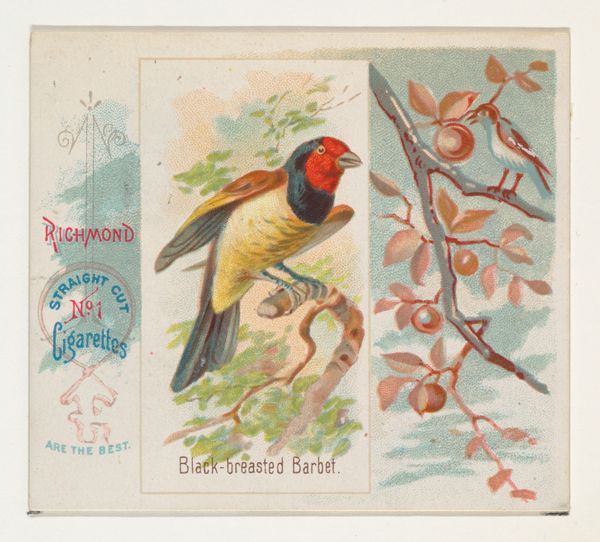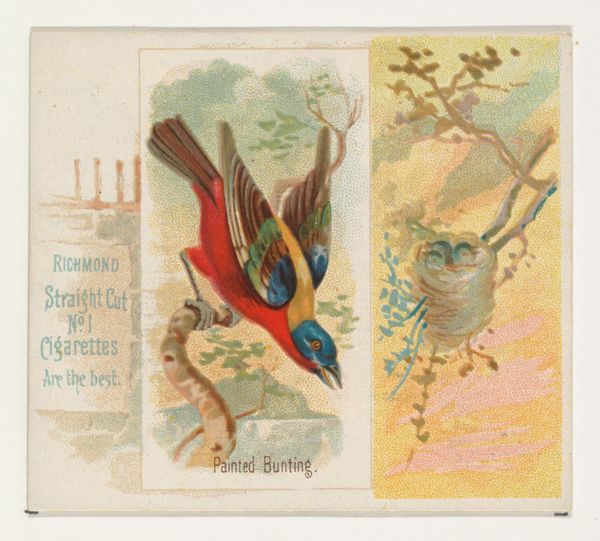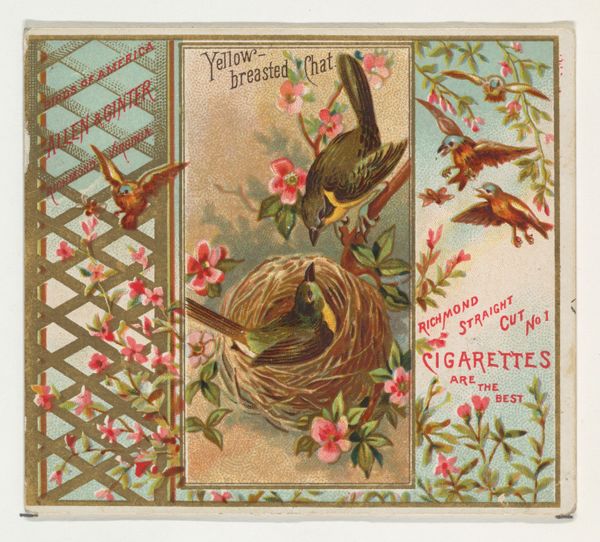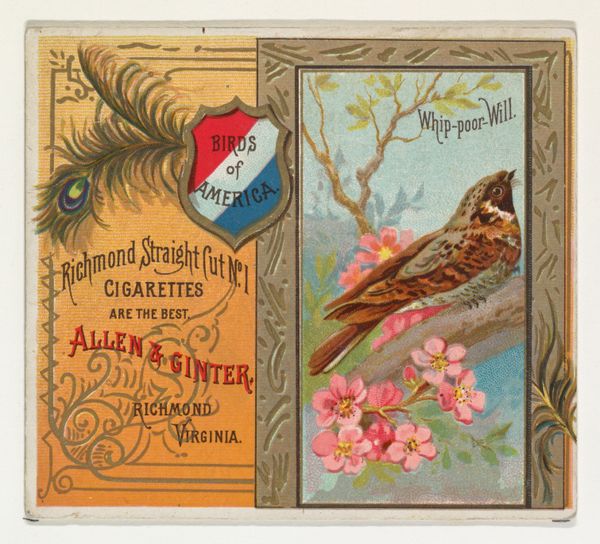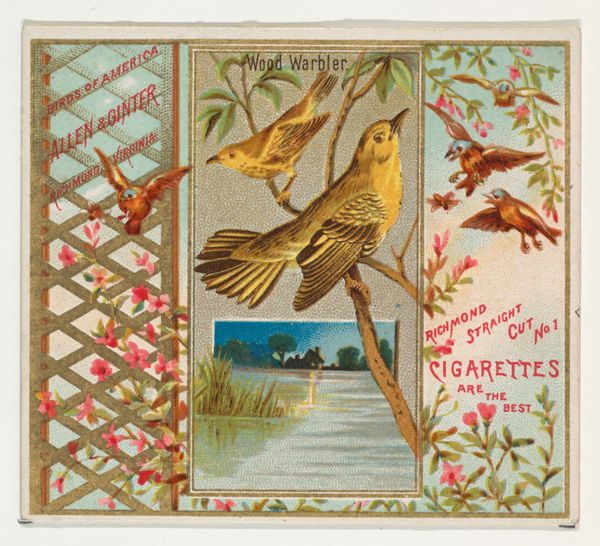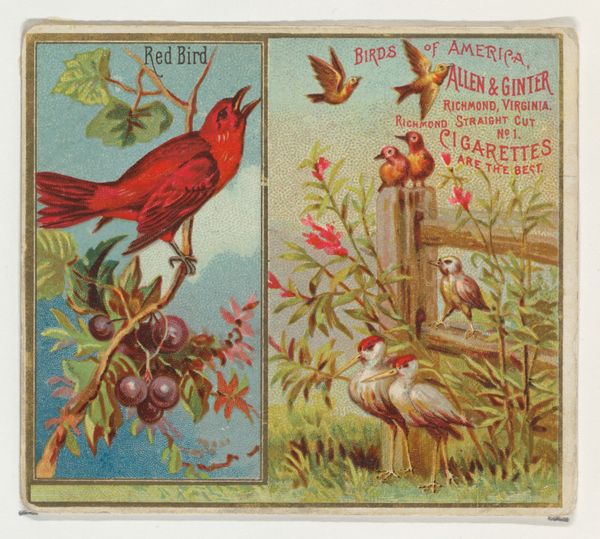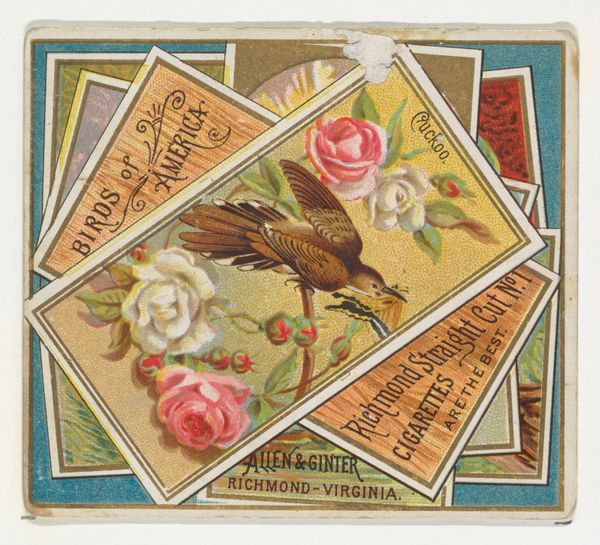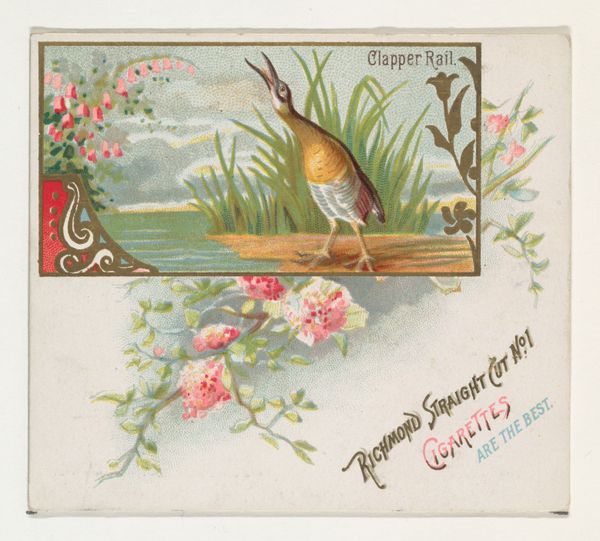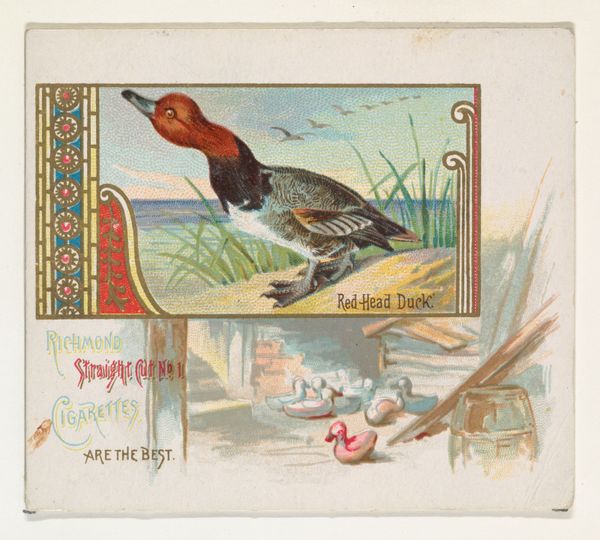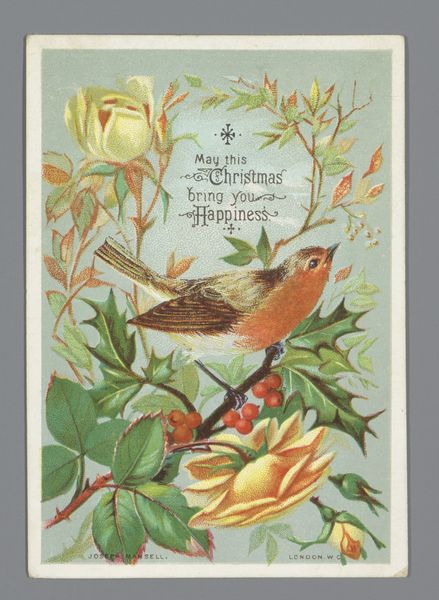
Chickadee, from the Birds of America series (N37) for Allen & Ginter Cigarettes 1888
0:00
0:00
drawing, print
#
drawing
#
water colours
#
egg art
# print
#
bird
#
handmade artwork painting
#
tile art
#
naive art
#
art nouveau
#
watercolour bleed
#
earthenware
#
watercolour illustration
#
watercolor
Dimensions: Sheet: 2 7/8 x 3 1/4 in. (7.3 x 8.3 cm)
Copyright: Public Domain
Curator: Here we have a delightful print, "Chickadee," from the "Birds of America" series, created in 1888 for Allen & Ginter Cigarettes. It's currently held here at the Metropolitan Museum of Art. Editor: Oh, how charming! It has this naive quality to it, with the bird perched among impossibly large roses and berries. It almost feels like looking through a child's eyes. Curator: These cards were essentially miniature artworks, produced using drawings and watercolours. Their primary function, of course, was marketing – alluring Victorian smokers with a promise of refinement and taste. Allen & Ginter were located in Richmond, Virginia, which you can see labeled. The cards themselves were collected and traded. It challenges our assumptions about art and commodification. Editor: I find the presentation fascinating—such delicate beauty paired with something so decidedly... un-delicate as cigarettes. It’s that collision of nature and industry that truly piques my interest. Makes one think about the inherent contradictions of the time and of today. Curator: The material conditions were everything. It reflects both an increased industrialization of printing processes alongside an intense desire for nostalgic representations of the natural world being lost due to this same expansion. Editor: Absolutely. Plus, someone hand-painted these details and probably felt some form of connection or detachment doing this commercial project. The slight imperfections become deeply resonant somehow! It makes me want to search for these in my grandmother's attic. Curator: Precisely. Thinking about who manufactured these, in what context, how they were distributed and ultimately consumed tells a deeper story about labor practices. Editor: It really gives one something to consider. Curator: It does indeed! It speaks volumes when looking past only at surface aesthetics. The entire infrastructure supporting the artwork's existence, in a way, becomes its true masterpiece.
Comments
No comments
Be the first to comment and join the conversation on the ultimate creative platform.
